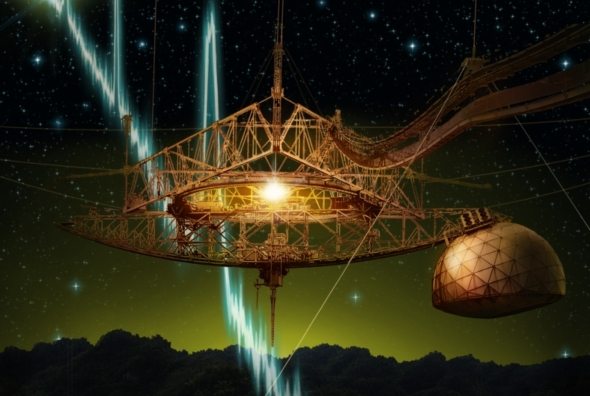The Mystery of Deep Space Radio Signals Becomes Even Stranger
Ashley Allen / 9 years ago

Last year, we told you that a series of strange signals from the depths of space had been detected by the Parkes radio telescope in New South Wales, Australia. The detection of the Fast Radio Burst (FRB) signals near the constellation of Auriga were remarkable because they were so brief – lasting “as long as it takes a human to blink their eye,” according to Swinburne University’s Emily Petroff – and, as yet, unexplained.
Since then, the Arecibo radio telescope in Puerto Rico – famous to non-astronomers as the climactic setting of the 1995 James Bond movie, Goldeneye – has been monitoring these 10 millisecond-long bursts, and has determined that, whatever the signals are, they’re repeating.
That these FRBs are not one-offs, powered by some kind of explosive event such as a solar flare or a collapsing star, suggests that a continuing energy source is powering the signals. That could make the source a spinning neutron star, or even (whisper it) aliens.
“The fact it repeats rules out—for this object anyway—any of the models that are just one-offs, whether they involve mergers or evaporating black holes or something else,” James Cordes, astronomer at Cornell University, told Scientific American.
Cordes does not pay lip service to the idea that aliens are responsible for the radio transmissions, instead pinning his hypothesis on recognised natural phenomena. “Nature is more clever than theorists, and I think most of us would hope there are new, exotic phenomena to be identified here, but we have to be careful to not let expectations trump reality,” Cordes added. “I am a minimalist—if you can explain something by known phenomena, you should.”



















